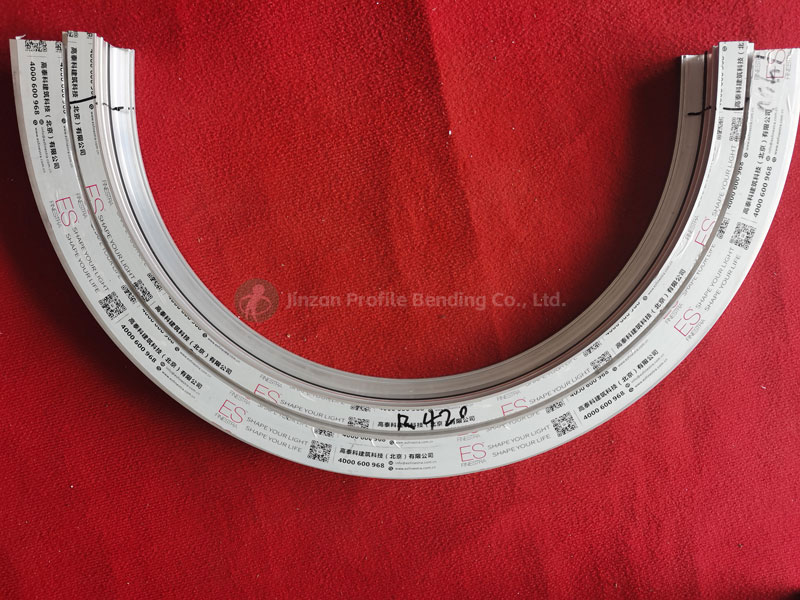Redefining the construction industry with innovative solutions, cuttin-edge technology and sustainable practices
Profile Bending 2025-07-15
In today’s fast-paced manufacturing landscape, efficiency, precision, and adaptability are crucial for staying competitive. One area that has seen significant advancements is profile bending technology. This innovative process not only enhances the fabrication of various materials but also revolutionizes the way manufacturers approach design and production. By leveraging cutting-edge techniques and equipment, profile bending is transforming industries ranging from construction to automotive, enabling the creation of complex shapes with remarkable ease and accuracy.
Profile bending refers to the process of bending materials—typically metal profiles such as beams, tubes, and sheets—into specific shapes required for engineering and architectural applications. This technique is essential for producing components that are not only structurally sound but also aesthetically pleasing. Traditional bending methods often required extensive manual labor and time, leading to inefficiencies and increased production costs. However, recent innovations in profile bending technology have streamlined these processes, allowing manufacturers to achieve higher precision and faster turnaround times.
One of the most notable advancements in profile bending technology is the introduction of automated bending machines. These state-of-the-art machines are equipped with computer numerical control (CNC) systems that allow for precise control over the bending process. Operators can input specific parameters into the software, such as angle, radius, and length, enabling the machine to replicate complex bends consistently and accurately.
This automation not only reduces the risk of human error but also enhances production efficiency. CNC bending machines can operate at high speeds, significantly decreasing the time required to produce components. Furthermore, the ability to store multiple programs means that manufacturers can quickly switch between different designs without extensive setup times, making the process more flexible and responsive to market demands.

Alongside advancements in machinery, innovations in materials have also played a critical role in the evolution of profile bending technology. The development of high-strength, lightweight alloys and advanced composites has expanded the possibilities for bending applications. These materials not only allow for thinner profiles without compromising strength but also contribute to overall weight reduction in end products, which is particularly beneficial in industries such as aerospace and automotive.
Moreover, the introduction of new coatings and treatments has improved the durability and corrosion resistance of bent profiles, extending their lifespan and reducing maintenance costs. This is increasingly important as manufacturers strive to produce components that meet stringent quality standards while also being environmentally friendly.
With the integration of advanced software solutions, manufacturers can now design and simulate complex bends before physical production begins. Software tools allow engineers to visualize the bending process, assess potential issues, and optimize designs for both aesthetics and functionality. This capability not only accelerates the design phase but also minimizes material waste, as manufacturers can identify the most efficient use of resources.
Additionally, the advent of 3D modeling and virtual reality (VR) technologies has enabled designers to create and manipulate profiles in a virtual environment. This immersive approach facilitates better collaboration between design and engineering teams, ensuring that the final product aligns with the initial vision.
The innovations in profile bending technology have far-reaching implications across various industries. In the construction sector, bent steel profiles are essential for creating structural elements such as beams, arches, and trusses, allowing for unique architectural designs. The automotive industry benefits from lightweight, bent components that enhance fuel efficiency and performance while maintaining safety standards.
Moreover, the furniture and consumer goods sectors are leveraging profile bending to create modern designs that combine functionality with aesthetic appeal. From curved furniture pieces to intricate decorative elements, the ability to bend profiles accurately allows designers to push creative boundaries.
Despite the numerous advantages of innovations in profile bending technology, challenges remain. Manufacturers must continuously adapt to evolving materials and design requirements while ensuring that their equipment and processes remain up to date. Additionally, as sustainability becomes a focal point in manufacturing, there is an increasing demand for processes that minimize waste and energy consumption.
Looking to the future, the integration of artificial intelligence (AI) and machine learning into profile bending technology promises to enhance efficiency further. These technologies could enable predictive maintenance of machinery, optimize bending processes in real-time, and facilitate smarter inventory management.
Innovations in profile bending technology are revolutionizing manufacturing processes, offering enhanced precision, efficiency, and design capabilities. As industries continue to evolve, the ability to produce complex shapes with reduced lead times and improved material performance will be crucial for staying competitive. By embracing these advancements, manufacturers can not only meet current market demands but also pave the way for future innovations that will shape the manufacturing landscape for years to come. The ongoing evolution of profile bending technology signals an exciting future for industries reliant on high-quality, versatile components.